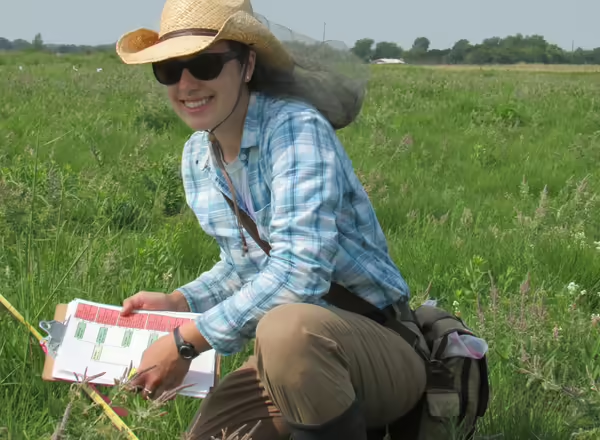
I never thought I’d be called “the grass lady.” When I started getting into plant identification, I too looked at grasses as a group of plants that only the best of the best could identify – and that was most definitely not me.
And then I found myself in an internship where I needed to tell grasses apart from one another. I was part of a Grassland Monitoring Team working to assess the impacts of prairie restoration management. We were looking for desirable plants as well as red flags – non-native or invasive plants that needed management attention. That was pretty high stakes – we needed to know if the work being done was successful – and this required accurate plant identification.
So I started to teach myself. Lots of careful observation, pictures, identification books, and time. By no means was it smooth sailing! We could talk about my identification mistake that led to a whole bunch of surveys needing to be re-done - grasses flower too, and when they do, they can look different than a younger version of themselves - or the blank stares as I compared two apparently different grasses that looked so similar. Instead, we’ll talk about the tips and tricks I learned along the way that made grass identification much more approachable, and dare I say it, even possible!

I start this blog to offer my tips and tricks to identifying many different grass species that can be found in Illinois. Many posts will include in-depth identification information on one species, but other posts will touch on telling tricky grasses apart from one another, paying attention to where a grass grows or when it flowers to help with identification, and other nuggets of grass related information.
The majority of the grasses to be covered will be grasses you can find while hiking in a prairie or the woods, growing on the roadsides, or in a restoration. Lawn grasses and ornamental grasses are another topic, and not the primary focus here.
Do you find yourself drawing a blank when it comes to grass identification? Are you wanting to tell if you have a desirable grass for wildlife on your property, or a nuisance that should be managed before it gets out of control? Stick around, and we’ll step into grass identification – one grass at a time!
Never miss a new post! Sign up for our email list.
ABOUT THE AUTHOR: Erin Garrett is a Natural Resources, Environment, and Energy Educator for University of Illinois Extension serving Alexander, Johnson, Massac, Pulaski, and Union counties. Erin develops and delivers high impact programming to adults and youth to help them develop an appreciation for natural resources and to empower them to make small changes to positively impact the environment. Erin’s programming focuses on why homeowners should consider choosing native plants, how to support native pollinators, how to identify grasses, how to identify and manage invasive species, and developing an appreciation for prairie ecosystems.
ABOUT THE BLOG: Grasses at a Glance dives into grass identification, focusing on tips and tricks that make grass identification possible. Get information about native and non-native species, how to tell look-alikes apart, and which grasses you can find in Illinois. Never miss a new post! Sign up for our email list.